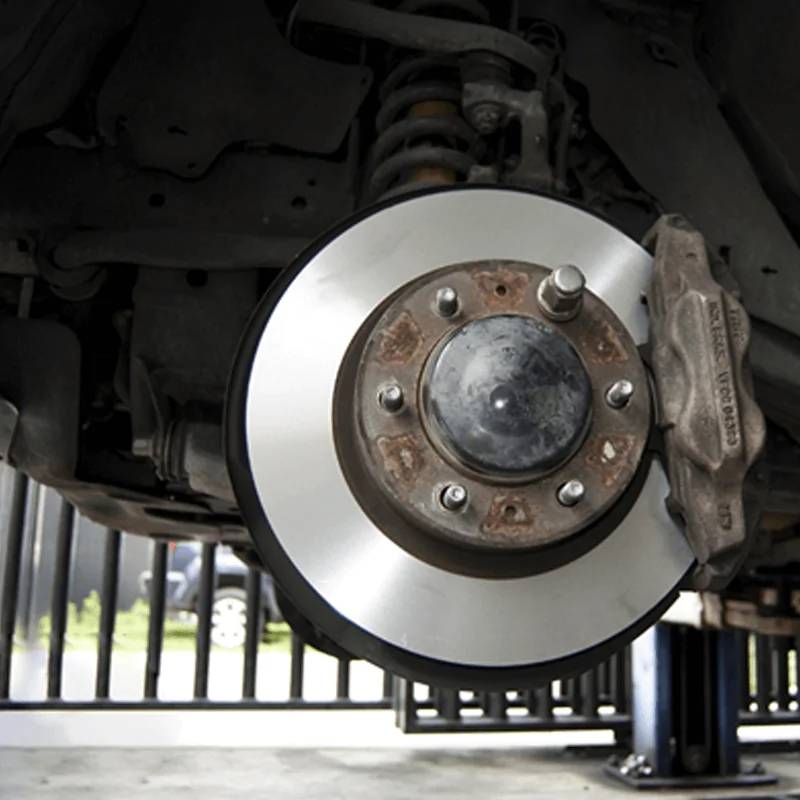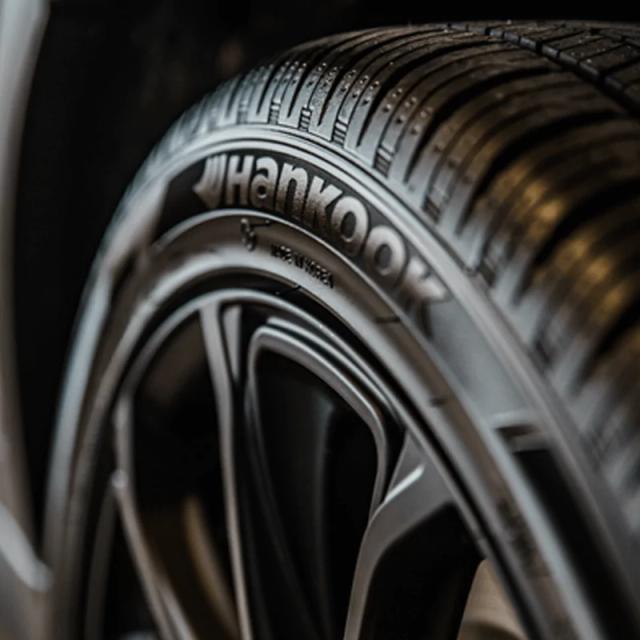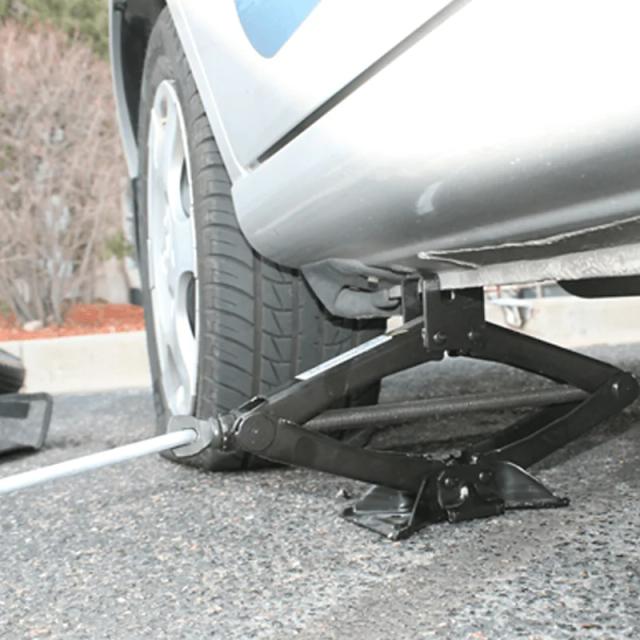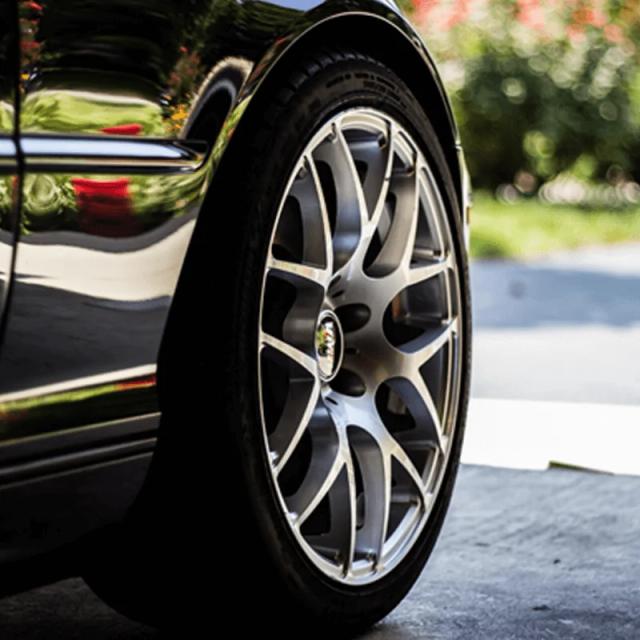
Your brake pads work hard whenever you stop at a traffic light, park your car, or stop for a pedestrian at a zebra crossing. These small but essential pads are what create the friction needed to slow the wheels and bring your car to a stop. But, all that work takes its toll: even though they're designed to be very hard-wearing, the brake pads will inevitably wear down and need replacing. And, while the pads themselves aren't especially costly, having the work carried out at a garage can be pretty pricey.
Fortunately, it's possible to do the job yourself at home. Changing brake pads is slightly more complex than simply fitting a spare tyre or topping up brake fluid, but if you already have a good level of mechanical knowledge and feel confident in your ability to do the job, you should be up to the task.
You can get your new brake pad sets from our brake discs and pads page in our braking section. Just enter your reg number or make and model and we’ll only show you the parts available for your vehicle.
In this guide, we'll explain when, why and how you should change your brake pads, covering:
How Do Brake Pads Work?
How Often Do I Need to Replace the Brake Pads?
How Do I Know if Brake Pads Need Replacing?
What Will I Need to Change My Brake Pads?
Before You Start Changing the Brake Pads
How to Change Your Brake Pads - 10 Simple Steps
Brake Pad Know-How
How Do Brake Pads Work?
Brake pads are the part of the brakes which provides the friction needed to slow or stop your car. The braking system on each wheel consists of a brake disc, a caliper, and a pair of brake pads – you can sometimes see the caliper and disc behind the alloys on certain models, like the one pictured above.
The brake pads are fitted inside the caliper, on either side of the brake disc. When you hit the brake pedal, hydraulic pressure travels along the brake lines and forces the caliper shut, bringing the brake pads into contact with the disc. This applies the friction needed to slow the spinning brake disc, which slows – and eventually stops – the car.
It takes a lot of force to stop a speeding car, so brake pads are usually made from very tough materials which can generate the necessary amount of friction without overheating – typically, a blend of iron, copper, steel and graphite is used. Even so, they still wear down over time, which is why they must be replaced regularly.
How Often Do I Need to Replace the Brake Pads?
Considering how much force is needed to stop a car and how many times you'll hit the brakes every time you drive, it's little wonder that all brake pads must be changed eventually. But not all brake pads will wear down at the same rate, and there are several reasons for this, like your mileage, your driving, and the weight of your vehicle.
Driving Style
The primary factor is the way that you drive. Driving aggressively, breaking sharply, and skidding the car will all wear down your brake pads more quickly than sensible driving. If you drive in cities or are often backed up at junctions or in traffic jams, the pads will wear down faster, as you'll be hitting the brakes more often than if you were out on a clear road in the countryside.
The Vehicle Weight
The weight of your vehicle – and whatever you're transporting – can also affect the lifespan of your brake pads. The heavier your car, the more force is required to stop it, meaning the brake pads must endure more friction. So, if you frequently carry a lot of passengers or keep heavy objects in your boot, the pads will wear out more quickly.
Car Mileage
Mileage is another major factor, as the brake pads wear down faster the more you drive. There's no hard and fast rule, but generally speaking, your brake pads will need to be changed after approximately 25,000 – 60,000 miles, depending on the other factors outlined above.
How Do I Know if Brake Pads Need Replacing?
Most modern cars will have brake pad wear sensors, meaning a warning light will appear on the dash when one of the pads needs changing. But not all cars are fitted with sensors (especially not older or vintage vehicles), so you'll need to check the brake pads regularly or have them checked by a mechanic. Below, we've shared some signs you might notice if one or more of your car's brake pads are wearing thin.
Screeching or Grinding Sounds
A metallic screeching noise is usually a sign that your brake pads are wearing dangerously low. Many brake pads have a small metal shim designed to grate against the rotor disc when the pad has reached the end of its serviceable life, warning the driver that it's time for a replacement.
If you hear a loud, grinding noise, it's probably too late, as the pads will likely have worn down entirely already. If this happens, you should stop driving the car immediately and arrange a replacement immediately.
The Car' Drifts' When You Brake
If you can feel the car drifting to one side when braking, then this could be caused by a worn-out brake pad. It could also be a symptom of an underlying problem with the alignment or overall braking efficiency, so you'll want to get this checked out by a professional.
The Brake Pedal Vibrates
When the brake pedal vibrates under your foot when you press it, it's a sign that the brake pads might be warped, worn, or damaged, and so will need to be visually checked.
The Brake Pads Are Visibly Worn
If you don't have a brake pad indicator in your car, you can visually inspect the pads for wear and tear. For most cars, this will mean removing the wheel, although, on some models, you may see the outer brake pad through the spokes of the alloy wheel cover. The minimum recommended thickness for your brake pads is 3mm; any thinner than this and it could cause severe damage to the braking system. So, it's best to change the pads once the thickness falls below 6mm.
What Will I Need to Change My Brake Pads?
Before you can begin changing your brake pads, you'll need the following tools and parts:
Replacement brake pads
A brake pad fitting kit (if applicable for your make and model)
A wire brush
A floor jack
Axle stands
Screwdriver with a flat head
C-clamp
Socket set
Torque wrench
Allen key set (if applicable for your make and model)
Ruler
Pliers
It will make the job more manageable if you have the following aerosols and lubricants to hand:
For your own personal safety and comfort, you will also need:
Work gloves
Protective eyewear
A kneeling pad
Before You Start Changing the Brake Pads
Before attempting to change the brake pads, you should ensure you feel confident and qualified. Your car's braking system is critical to the overall safety and function of your car, and carrying out repair work incorrectly could cause your brakes to fail. You should only attempt to follow the process outlined here if you have some experience with automotive repairs and feel confident you can do the job right.
The braking system can also vary quite drastically between different car makes and models, so you should always check your owner's manual for more specific advice.
How to Change Your Brake Pads - 10 Simple Steps
Step 1 - Remove the Wheel
Start by ensuring your car is securely parked on a level surface, with the handbrake on. Loosen the lug nuts, but don't remove them completely just yet. Next, raise your car up off the ground using a trolley jack (you can find out how to do this in the owner's guidebook). Then, position axle stands underneath your vehicle to keep it stable. Fully unscrew the lug nuts, remove the wheel and set it to one side.
Step 2 - Clean the Brake and Remove the Guide Pin
Once the wheel is off, you can access the brake disc and pad. It's likely to be grubby with dirt and brake dust, so use the brake degreaser to quickly clean it. Then, hold the guide pin with a spanner and remove it. Use the spanner to hold the guide pin, unscrew, and remove the guide pin bolt. You may need to use some lubricant if it is stuck.
Step 3 - Remove the Calipers
Next, remove the caliper bolt and slide it out. If it doesn't slide out easily, gently prise it out with a pry bar or flathead screwdriver. Don't pull the caliper too hard once it's loose, which could damage the brake hose.
Step 4 - Remove the Brake Pads
Take off the clips holding the brake pads in place and put them to one side – be careful not to lose them. Then, lift away the brake pads from their mounting bracket. They should come away easily, but if they don't, a few gentle taps with the butt of your screwdriver may help.
Step 5 - Inspect the Brake Disc and Line
Take a closer look at the brake disc and line. The disc should be shiny and relatively smooth, with fine lines running through it. If you can see any deep grooves scored into the surface, the disc must be replaced. Remember that brake discs must always be replaced in pairs.
Next, check the brake lines. The rubber hose line should be supple, not cracked or hard. You'll also want to check the metal hose lines for signs of wear, damage, or corrosion. A faulty or leaky brake line can cause serious problems, so if you think you have a problem, it's best to get a professional opinion.
Step 6 - Fit the New Brake Pads
Insert the replacement brake pads, and then secure them using the clips. Apply a little of the copper grease to the edges of the brake pads, but be careful not to get any on the friction linings. Then, refit the caliper and tighten the bolts.
If this is difficult, it may be because the caliper has adjusted to suit the thinner width of the old, worn-down brake pads. In this case, you will need to adjust the tension of the caliper piston – check your owner's manual for more advice on how to do this. Most types of calipers in modern vehicles are wind-back calipers, so you will need a caliper rewind kit and the appropriate type of attachment. Removing the brake fluid reservoir cap will help to make this job more manageable.
At this stage, inspecting the caliper piston boot for signs of wear or damage is also advisable. We'd also recommend greasing the sliding pings at the same time.
Step 7 - Check the Brake Fluid
When you've finished both wheels, press the brake pedal several times to bring the pads into contact with the brake disc. You may need to top up the brake fluid, so check the level in the reservoir – you can learn more about this in our guide to bleeding the brakes and topping up the brake fluid.
Step 8 - Replace the Wheel
Place the wheel back on the axle. Loosely secure the lug nuts, but don't tighten them just yet.
Step 9 - Lower the Car and Tighten the Lug Nuts
Remove the axle stands and lower the jack. When the car is back on the ground, tighten the lug nuts completely to secure the tyre, working diagonally. Well done – you've just successfully changed your brake pads!
Step 10 - Test the Brake Pads
Take your vehicle for a short drive around the block, testing them. This must be carried out safely. Ensure there is no one behind you when you test your new brake pads and that it is performed in a safe area.
Brake Pad Know-How
Now that you know how to change brake pads, you're ready to get started – head over to our brake discs and pads shop to ensure you've got everything you need before you begin, including brake discs and pads. You can find plenty more informative how-to guides in our auto knowledge hub, from changing a tyre to flushing the coolant system.
Although changing brake pads is by no means a complex task, the braking system is critical to the safety of your car, so this work must be carried out correctly. We'd only recommend performing this job yourself if you feel 100% sure you can do it properly. All car makes and models have different requirements, so GSF Car Parts cannot accept liability for damage caused by incorrect repair work.
Shop Braking System Parts at GSF Car Parts Online and In-Store
All our braking system parts are from trusted brands in the motoring industry, so you can count on them to be reliable and of excellent quality. Plus, our low-price promise means you can always expect great value, too.
We offer free UK delivery on all online orders over £25, plus 60-day returns*. We also know you want to get your car up and running as soon as possible, which is why we offer a Click and Collect service that allows you to get your new braking system part in just an hour.
So, buy braking system parts from us with confidence today. Or if you're close to one of our 180 store locations across the UK & Ireland, drop by. Our experienced staff will be able to direct you to the correct part for your vehicle.





